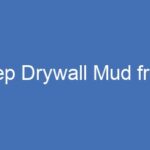Introduction
We detail the systematic process of drywall installation. Proper installation techniques and sequencing prove vital for both aesthetic and performance outcomes.
Drywall, also referred to as wallboard, plasterboard, or gypsum board, has been a mainstay in construction for over a century valued for affordable efficiency completing interior walls and ceilings.
Comprised of a gypsum plaster core sandwiched between paper facers, drywall gets produced in sheets installed using screws, nails, or adhesives onto wall and ceiling framing. Seams then get concealed with joint tape and compound achieving smooth, monolithic surfaces ready for decorating.
Overview of Drywall Installation and Significance
Installation process broadly entails structural framing preparation, cutting panels to fit spaces, mechanical fastening to frames, concealing seams via multi-coat mudding using paper tape and joint compound, finally smoothing surfaces ready for priming, texturing, then decorating. Where finishing quality proves paramount, an additional skim coat will enhance smoothness. Proper installation directly impacts aesthetic success and downstream decorator expense. Beyond obvious cosmetics, careful placement and support affects overall wall durability and acoustic performance critical in quality builds. We explore necessary knowledge ensuring robust, durable drywall work.
Pre-Installation Planning and Preparation
Meticulous planning and framing preparation sets the stage for efficient mounting and finishing. It facilitates appropriately purchasing materials, establishing necessary logistics, securing technical information, and readying structures for receiving drywall sheets with sufficient backing support.
Evaluating Room Dimensions and Layouts
Installers first quantify overall areas needing drywall along with wall placements and ceiling geometries per plans. Exact site measurements help estimate total board footage requirements and any special dimensional needs. Design complexities also get noted.
Calculating Needed Quantities of Drywall
With square foot totals known, board requirements get calculated allowing purchase of full units avoiding small wasteful remnants. Room size and sheet dimensions reveal quantity needs for costing. Typical sheets run 4×8, 4×10, or 4×12 feet by 1/2 or 5/8-inch thick. Ceilings usually take 1/2-inch panels.
Ordering Boards with Proper Size and Thickness
Precise quantities of each length and type drywall get ordered through suppliers to meet room totals. This avoids over-purchasing yet secures adequate materials for effortless installation. Proper thickness suits backings.
Clearing and Preparing Walls and Framing
Pre-work additionally inspects framing and substrates checking acceptable drywall attachment structural integrity and conformity to plans and code. Unsound framing gets remedied, wiring finished, old surfaces cleared, and moisture remediated before mounting new gypsum boards.
This might interest you: Advanced Drywall Layout Techniques
Cutting and Mounting Drywall Panels
With framing prepared and materials procured, installation begins transforming rolled building plans into physical structures with broad gypsum sheets cut then screwed onto walls and ceilings according to specified layouts and clearances.
Methods for Accurate Measuring and Cutting
Fitting board dimensions into rooms requires transcribing plans onto panels for cutting either manually or by power saws. Templates aid replicating repetitive shapes. Cuts follow framing for backing support.
Cutouts for Electrical Boxes, Vents, Fixtures
Penetrations trace and cut out neatly accommodate outlet boxes, lighting cans, duct vents already installed in framing. Carefully cutting openings prevents tearing paper coverings and breaking panel cores when mounting boards.
Lifting, Transporting, and Mounting Sheets
Maneuvering heavy, awkward 4×8 boards proves physically demanding. Teams coordinate lifting, carrying, then hoisting sheets against framing for fastening. Temporary supports assist holding boards overhead awaiting attachment.
Screwing Panels to Studs and Joists
Appropriately sized drywall screws penetrate framing members securing boards at 12 to 16-inches along walls, 6-8 inches on ceilings. Backing integrity necessitates thoughtful placement to prevent loosening over time. Screw heads dimple not tear paper.
Sealing Seams and Gaps
Adjoining drywall sheets rarely align seamlessly owing to dimensional variances and handling, exhibiting slight gaps even when tightly abutted. Sealing the joints before finishing prevents surface cracks or bulging. Tape embedding into joint compound bonds and conceals the seams.
Applying Seam Tape for Crack Prevention
Covering each seam with special perforated drywall tape gets embedded into wet joint compound. This stabilizes and seals joints as material cures then withstands later sanding and handling that could otherwise fracture brittle dried compound.
Mudding Techniques to Conceal Joints
Installers apply thin coats of viscous joint compound smoothing it over seams, then once dried, lightly sand and add subsequent coats building up thickness concealing transitions of adjoining boards. It gets feathered out onto panel faces disguising perimeters.
Taping Corner Bead Strips for Edge Finishing
Plastic or metal corner beads get similarly embedded across wall corners sustaining the edges against blows while providing improved corners versus simple compound. Durability and aesthetic finishing demand careful installation.
This might interest you: Tear Away Bead Drywall Installation
Smoothing and Sanding
Achieving appropriately smooth, uniform panels with concealed joints relies upon proper compound application, feathering, drying then intermediate sanding between multiple coats for ideally indistinguishable surfaces.
Multi-coat Process with Drying Time
Mudding requires three coats: embedding tape, filling then smoothing joint, and spreading wide to obscure transitions. Drying minimums follow each to prevent cracking from compound shrinkage stresses. Cool, dry conditions can require longer than 24 hours.
Smoothing Mud Layers
Trowels, broad knives, and specialty tools like corner beaders aid feathering compound over joints, edges, and fastener dimples for imperceptible uniformity across panel faces once painted. It takes finesse.
Fine Sanding Between Coats
Grit sand papers or screens gently smooth dried coats scuffing high points before fresh mud layers get applied, preventing uneven build up. This promotes flatness for decorating. Dust raised needs containing.
Priming and Finishing
Prepping surfaces to accept decorations without telegraphing flaws requires suitable sizing products before texture or final coatings go on. Matching surrounding areas makes seamless visual transitions from existing finishes.
Primer and Sealer Options and Application
Quality drywall primers work to seal porous gypsum paper and core evenly while providing sufficient “tooth” for paint adhesion. They prevent stains bleeding through decorations reacting with drywall ingredients.
Where necessary, texture gets spray applied then flattened matching surrounding surfaces for uniform visual flow from existing areas into new drywall finishing zones. This completes monolithic appearance.
Final Paint or Wallcovering
With surfaces prepped, primed, and matched, typical latex interior paint constitutes the final decoration coating. Alternatively, wallpaper or other specialty treatments finish areas as desired.
Special Considerations and Details
Various drywall applications beyond straight wall runs require tailored solutions for both structural needs and aesthetic continuity of specialized spaces.
Moisture-Resistant Installation
Bathrooms and laundry rooms require specialized moisture and mold-resistant panels, appropriate seam treatment, with liberal vapor-retardant primer amounts. Preventing water intrusion protects wall integrity.
Sound-Reduction Assemblies
Theater rooms may utilize multiple drywall layer assemblies, heavy sealants, isolation fasteners, and perimeter seals boosting noise containment versus basic code minimums.
Curved Wall Treatment
Gradual radiused walls without inside framing support rely on flexible 1/4-inch boards screwed closely together bendable to shape either concave or convex as needed per design.
Ceiling Specifics
Stone ceiling panels necessitate closer screw spacing – up to 6 inches on center – along framing for additional weight loading without sagging over time especially where heat, moisture fluctuate.
Working Around Pipes, Wires, Ducts
Carefully cutting board edges to follow surface-protruding elements like conduit then sealing gaps with acoustical caulk containing no wood or paper prevents sound leakage degrading noise isolation.
Tools and Equipment
Specialized tools ranging from common hand implements to power machinery aid efficiency securing, cutting, transporting, and finishing drywall. Protective wear additionally improves safety.
Essential Hand Tools
Trowels, broad knives, corner tools, rasps, levels, chalk lines, utility knives, and sand paper assist hand working compounds and boards on site for precision fits.
Power Tools Like Screw Guns
Battery powered drivers set screws rapidly and depth controlled preventing paper damage while drills bore holes for vent openings, lights. Routers cut outs flush.
Lifts, Carriers, Platforms
Mechanical advantage equipment like T lifts or panel hoists allow solo installing sheets overhead or high on walls. Tables aid cutting. Stilts assist reach.
Safety Equipment
Masks reduce drywall dust inhalation. Gloves and long sleeves protect skin against fiberglass or chemical irritation. Hard hats, toe protection, goggles, ear plugs used appropriately minimize injuries.
Skills and Training
Developing expertise managing entire drywall installation operations, troubleshooting challenges, and directing crews stems from formal multi-year apprenticeship mentorship honing best practice techniques for efficiency and quality.
Drywall Installation Apprenticeship
Successful finishing requires years perfecting adaptable experience recognizing subtle installation factors impacting end results. Apprentices observe then implement vetted techniques as mentorship accelerates capability.
On-Site Roles and Responsibilities
Managing specialty contractor crews on complex jobs entails planning, logistics, staff oversight, inspecting for standard compliance, rectifying non-conformances, reporting progress, and customer relations liaising.
Safety Procedures
Strict protocols govern equipment operation, dust containment, fall prevention, heavy lifting, electrical safety, and chemical handling regulated through Foreman enforcement ensuring worker wellbeing and incident prevention.
Wrapping Up
Recap of Complete Drywall Installation Process
We’ve explored the beginning-to-end process installing drywall encompassing planning, materials, mounting, multi-coat finishing, surface prep, detailing to specifications that collectively enable quality, aesthetic, well-constructed results when carefully orchestrated by trained teams using proven methods.
Role of Specialized Skills and Equipment
Specialized drywall contractor expertise and use of particular tools improves efficiency and quality particularly on custom homes where greater precision matching architectural designs becomes vital to prevent cost overruns or delays to downstream decorator trades needing smooth, consistent gypsum surfaces for exceptional finishes.
Importance of Planning and Prep Work
Thorough project familiarization, takeoffs, logistics coordination, tool staging, and workspace readiness minimizes delays keeping projects on schedule. Materials ordered and delivered per plan prevent shortages. Prep establishes smooth site rhythm and completion confidence.
Achieving Quality Results
Well-installed drywall not only facilitates easier, less costly decorating but importantly provides durable lifespan performance. Structurally sound mounting preventing cracks, smooth seam treatments resisting dents, proper primers containing moisture intrusion, and matched textures make flawless surfaces owners appreciate long term. Careful process execution leads to quality results benefitting all stakeholders. Proper drywall installation deserves attention as a craft impacting spaces for years to come.
tag: # drywall installation







